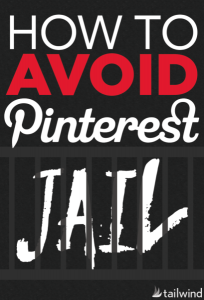Marketing as we know it is gone thanks to the current pandemic. Marketing teams can no longer function on their own as consumer habits change. Stay at home orders have led more consumers to shop online, forcing marketers to devote more attention to their eCommerce strategy.
Because of this shift, today’s marketers are feeling a new type of pressure to meet both consumer expectations and internal marketing goals. They can no longer allocate most of their time and money to build awareness in the hopes that “if you market it, they will come”. They must sell through their marketing efforts and tie them to ROI metrics alongside sales metrics.
But before they can do this successfully, marketing and sales must work together to learn how to work alongside each other. Industry research shows that 25% of businesses said their sales and marketing teams were misaligned. Another survey shows that 60% of marketers said they understand what their sales teams need. On the flip side, only 30% of sales teams agree. Clearly, a barrier exists between sales and marketing.
Still, with the rise in eCommerce and as marketing becomes more tied to revenue, marketers must raze this barrier. It’s essential they work in tandem with sales teams while continuing to deliver an exceptional customer experience. How can marketers adjust to align themselves with sales teams and work together to drive revenue? I have three important tactics for marketers to consider.
Align your current customer journey
Marketers should align their customer journey with the sales team and vice versa. Marketers must know who the target persona is from the sales perspective and what the typical customer journey entails. This clarifies the picture of what gaps they can fill as they adjust their overall strategy.
The typical customer journey funnel consists of three primary stages: how much the audience is aware of your brand or product, the interest or consideration level of your brand, and the action your audience takes. Marketers should determine how to align their strategies and KPIs at each level with the sales team. Once that’s determined, both teams will have a greater understanding of how each potential customer travels through the funnel and how they can align their messaging accordingly.
Invest in automation that delivers valuable data
Once both teams are aligned, it’s important to invest in the proper technology that meets the needs of sales and marketing. This technology can save time, money and most importantly, improve the customer experience. Teams should prioritize a solution that leverages automation and allows them to create and scale content relevant to consumers across the globe. Automation can deliver valuable data and insights to marketers to better understand who their customer is, what they are interested in and previous shopping habits. Marketers can use data to personalize the message in real-time and at the moment a consumer is most likely to purchase.
As marketers become more tied to ROI, data-driven personalization can drive conversions. When consumers feel like they receive a message built for them and includes specific products they are most interested in, they’re more likely to purchase it — supporting marketing and sales teams’ efforts and increasing sales.
Leverage an omnichannel strategy
The final step is to maximize your marketing efforts by developing an omnichannel strategy spanning all channels like social, website, email and mobile. Those who implement an omnichannel strategy have a leg up on the competition because their message reaches a broader, multi-channel audience.
For example, a large sporting equipment company leveraged an omnichannel personalization strategy across video, native, social and display ads — personalizing the content and driving consumer engagement. The company used data to customize products in its ads to consumers based on the weather in their location. One consumer living in a rainy climate received a different product than one in an arid climate. Personalizing the message for each consumer allowed them to envision themselves wearing the product, ultimately driving them to purchase said product. Thanks to this omnichannel personalization strategy, the company performed three times better than the industry average.
Another example comes from a large multinational food, snack and beverage company that wanted to promote regional beverage flavors. Using an omnichannel personalization strategy, they delivered a custom message based on users’ locations and time of day across multiple channels. Because it leveraged automation to scale its message, the brand created 125 unique variations of the ad, each personalized based on the region and using different images and copy. A process that would usually take thousands of dollars was achieved with 26% less cost.
Businesses that emerge from this pandemic the same should be worried. The same goes for marketers — if they don’t remain agile and adopt new practices while aligning their efforts with the sales team, they risk falling behind. By aligning their efforts with sales teams, investing in automation and prioritizing a personalized omnichannel strategy, marketers set themselves up to thrive post-pandemic.
Digital & Social Articles on Business 2 Community
(9)






